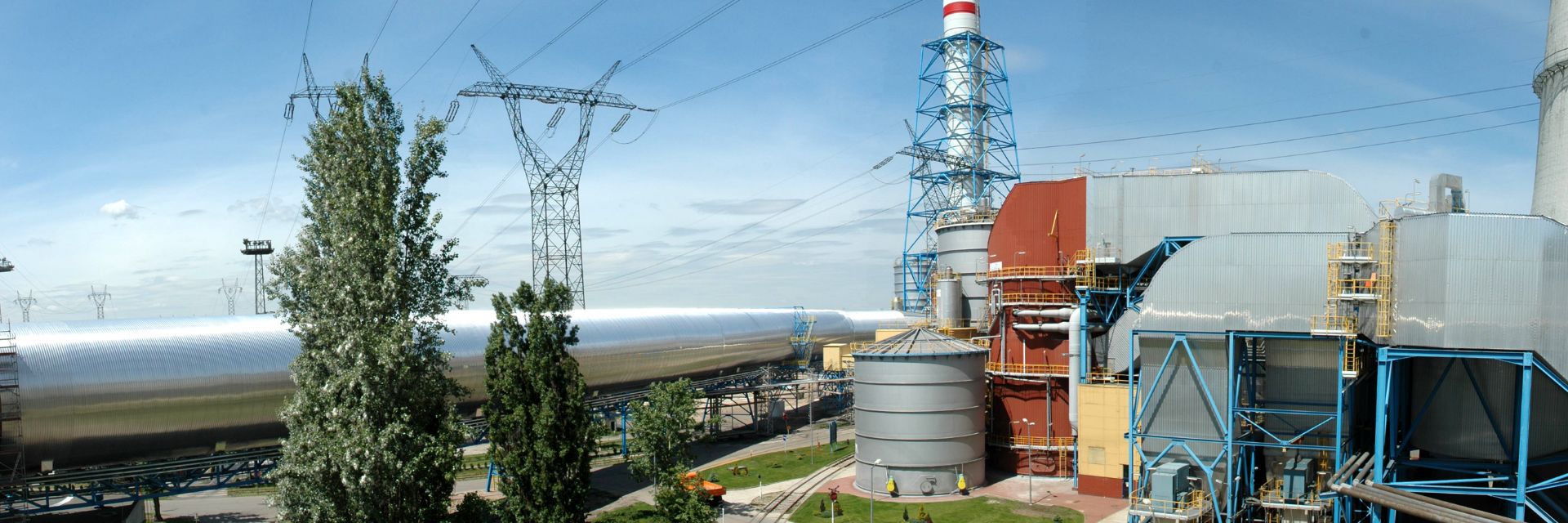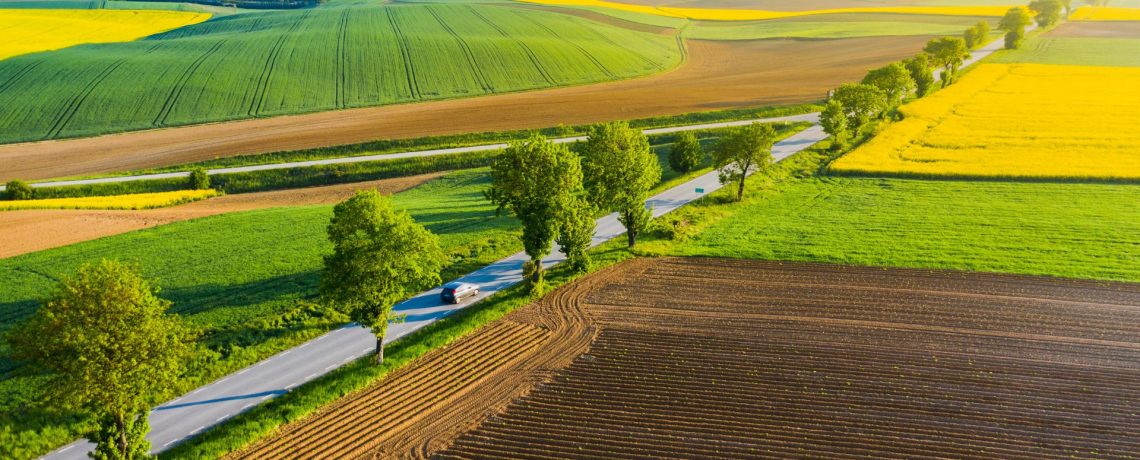ESRS E2 Pollution

Material topics: Air pollution, Water pollution
Policies related to pollution
Pollutants generated by Enea Group companies include dust generated during the combustion of coal (which, in addition to soot, also contains heavy metals), pollution associated with the transportation of coal to generating units, and pollution of rivers resulting from the operation of hydroelectric power plants, caused by the disruption of the morphological continuity of rivers.
The Enea Group has not adopted a pollution policy that would be uniform across the organization. Pollution is most relevant to conventional power generation companies and LWB, and is therefore regulated on a case by case basis at the level of distinct Group companies and is usually part of the implemented environmental management systems. The procedures adopted by the companies concern their own operations, whereas the bodies responsible for their implementation are environmental protection teams. The procedures and instructions are updated continuously to comply with applicable laws and integrated permits. These are internal documents and are not publicly disclosed.
LW Bogdanka has an Integrated Management System Policy in place, under which measures are taken to reduce pollution. Examples of such measures include dust extraction systems and the reduction of dust through the reclamation efforts of the Mining Waste Neutralization Facility. The company also uses liquid contaminant separators for its fuel systems and stores waste in sealed containers on paved areas.
Enea Wytwarzanie regulates pollution by means of its Integrated Quality, Environmental and OHS Management System Policy which defines the company’s approach to managing its impact on the environment and lays down its environmental objectives and targets. Enea Wytwarzanie has also specified its obligations to ensure compliance with the applicable laws and other environmental requirements.
Furthermore, Enea Wytwarzanie has also implemented procedures concerning CO₂ emissions related to the combustion of coal, biomass, light fuel oil, mazut and propane for energy purposes and to the flue gas desulfurization process.
The Enea Elektrownia Połaniec power plant has implemented an Integrated Management System for electricity and heat generation. One of its elements is the PN-EN ISO 14001:2015 environmental management system. The system covers all organizational units within the company. The annual Integrated Management System audit, including the one carried out in 2024 (external auditor: Bureau Veritas), confirmed the power plant system’s compliance with the requirements of the standards by issuing a favorable opinion on the IMS. The Environmental Policy states that:
- We treat the environment as a heritage that must be protected.
- We work to prevent adverse environmental impacts.
- We use resources and environmental values reasonably.
Major policies and programs:
- Procedure for identification and evaluation of environmental aspects.
- Environmental monitoring procedure.
- Environmental Management Program.
Enea Ciepło has implemented an Environmental Management System, which includes procedures and instructions to limit, prevent and control air, water and soil pollution. At Enea Ciepło (Zachód Heat Plant), these include:
- Waste management manual at Enea Ciepło,
- Program for prevention of severe industrial accidents relating to the storage and use of hazardous substances and materials at the “Zachód” Heat Plant,
- Instruction on the disposal of combustion by-products from the “Zachód” Heat Plant,
- Internal inspections and training of Employees on the proper handling of waste in the “Zachód” Heat Plant and in heat distribution networks and hubs,
- Instruction on handling spills of petroleum substances or chemical substances,
- Instruction on the use of excavated soil,
- Manual specifying the method of storage, loading and transportation of hazardous and non-hazardous materials in the chemical warehouse.
The Environmental Management System put in place at Enea Ciepło sp. z o.o. (Białystok CHP Plant Branch) includes control procedures related to pollution management and monitoring and to ensuring compliance with legal requirements. These include: Procedure: Identification of hazards and determination of methods of response to environmental failures ENEA Ciepło sp. z o.o. – Białystok CHP Plant Branch, Procedure: Prevention and reduction of the impact of emergency situations on the environment at Enea Ciepło, Instructions for handling waste at the Białystok CHP Plant, Instructions for the management of hazardous and dangerous substances and mixtures.
The instructions put in place ensure the monitoring and reporting of CO₂ emissions. Moreover, as part of the adopted Climate Neutrality Plan, Enea Ciepło has defined how it intends to reduce its CO₂ emissions from fossil fuels.
At the Group level, there is no separate policy on the substitution and minimization of the use of potentially hazardous substances. The same applies to the individual Group companies. However, all Group companies limit the use of such substances to the extent necessary for their maintenance and repair activities.
At LW Bogdanka S.A., chemical products are only used for their intended purpose, and the company no longer use of products classified as Category 1 carcinogens or mutagens. This area is regulated in the company by Instructions IZS-PZ/S/05/06-01.
Enea Wytwarzanie has implemented the Procedure: Identification of potential emergency situations and response to their occurrence at Enea Wytwarzanie sp. z o.o. in order to prevent threats to the natural environment, in particular to human life or health, and to minimize the negative impact of the consequences of their occurrence by establishing appropriate emergency response methods. Issues concerning potentially hazardous substances are also regulated, for instance, in the Rules for the use of fluorinated greenhouse gases and the Instructions for the management of hazardous and dangerous substances and mixtures.
Enea Elektrownia Połaniec has adopted the Procedure: Program for the prevention of major industrial accidents, which covers issues related to the storage of substances and the use of hazardous substances in the production process.
Enea Ciepło uses potentially hazardous substances only to ensure the operation of its heating plant in the heat generation process. The procedure entitled Program for the prevention of major industrial accidents related to the storage and use of hazardous substances and materials at the Zachód Heat Plant identifies the risks associated with the possibility of a major industrial accident related to the storage and use of hazardous substances and materials on the premises and defines procedures for risk prevention.
Every year, Enea Ciepło (Białystok CHP Plant Division) reviews the possibility of eliminating various hazardous substances through technological changes or by replacing them with less harmful substitutes.
Enea Nowa Energia keeps a record of fluorinated greenhouse gases and supervises the use of potentially hazardous substances, replacing them with environmentally friendly products whenever possible. The procedures implemented in the company in respect of the management of hazardous materials include the Instructions for the management of hazardous and dangerous substances and mixtures and the Procedure for the use of fluorinated greenhouse gases.
There is no uniform incident and emergency prevention policy at the Group level, but most of the Group companies have adopted regulations on incident and emergency prevention and strictly adhere to these arrangements. They are presented in the table below. The procedures that have been put in place help prevent the occurrence of incidents and emergency situations, because they also include preventive measures and actions, not just those taken in response to an incident or emergency situation, e.g. Program for the prevention of major industrial accidents at Enea Elektrownia Połaniec or Program for the prevention of major industrial accidents related to the storage and use of hazardous substances and materials at the Zachód Heat Plant adopted by Enea Ciepło.
Procedure
- PZ/W/04/03 Emergency preparedness with a journal of potential emergencies
Procedure
- Procedure “Identification of potential emergencies and responding to their occurrence at Enea Wytwarzanie”
- Rescue plan in case of a threat to life and human health and property or the environment at Enea Wytwarzanie
- Non-Compliance Procedure
Procedure
- Major industrial accident prevention program
- Accident prevention, preparedness and response program
- Emergency action plans
- List of potential major accident sites
Procedure
- Program for prevention of severe industrial accidents relating to the storage and use of hazardous substances and materials at the “Zachód” Heat Plant
- Instruction on handling spills of petroleum substances or chemical substances,
Procedure
- Procedure “Prevention and mitigation of emergencies on the environment at Enea Ciepło – Białystok CHP Plant Division”
- Procedure of Conduct in the event of environmental emergencies at the Białystok CHP Plant.
- Procedure “Identification of threats and responses to environmental emergencies at Enea Ciepło – Białystok CHP Plant Division”
Procedure
- Fire Safety Instructions
- Instructions on how to act in cases of fire, natural disaster or other local hazard.
- Emergency preparedness and response procedures
E2-2 – Actions and resources related to pollution
Most Enea Group companies took measures related to pollution in 2024 – their scope was focused on their own operations and will be continued in the following year. The result of the measures taken is the collection of information on pollution and its reduction.
Key measures taken
- monitoring of emissions into the air and water
- upgrade, renovation, inspection and maintenance of protective installations and equipment (flue gas desulfurization and denitrification installations, electrostatic precipitators, sewage treatment plants) with the accompanying infrastructure
- maintaining high efficiency and availability of protective equipment at the Kozienice Power Plant
- monitoring the quantity and treatment of domestic, rain and industrial wastewater, and wastewater from the Flue Gas Desulfurization Plant
- ensuring the operation of coal ash removal, flue gas denitrification, flue gas desulfurization and slag removal systems
- improvement of the functioning and optimization of existing technological systems leading to the preservation of effective treatment and the stream of rainwater and industrial wastewater flowing into the treatment plant in various metrological and hydrological conditions
Key measures taken
- monitoring of air and water pollution, inspections, repairs, upgrade of protective equipment: flue gas desulfurization (FGD) systems, electrostatic precipitators, selective catalytic reduction (SCR) systems and associated infrastructure, replacement of catalytic layers in SCR systems, optimization of industrial wastewater treatment plants, ensuring the operation of coal and biomass ash removal systems, flue gas denitrification, flue gas desulfurization, slag removal
- use of FGD additives and denitrification
Key measures taken
- start of replacement of coal-fired boilers with gas or oil-fired boilers, including exhaust gas discharge system – expected completion date: 2025
- construction of heating oil storage and distribution system
Key measures taken
- replacement of ventilation, air conditioning and humidification systems
- development of the dust removal installation
- ensuring the operation of coal and biomass ash removal systems, flue gas denitrification, slag removal
Key measures taken
- installation of dust collectors on slag chutes
In 2024, the vast majority of Enea Group companies did not record any situations that required corrective action to be taken in relation to persons adversely affected as a result of actual material impacts. In early spring 2024, Enea Elektrownia Połaniec received a complaint about dust from the Pióry furnace waste landfill. The dust was caused by strong, gusty winds and a prolonged absence of precipitation. In order to counteract this phenomenon, preventive action involving the gelling of waste will be accelerated. This measure will limit the dusting that occurs during adverse weather conditions in early spring.
- In terms of pollution avoidance, measures were taken in 2024 by Enea Nowa Energia. The installation that emitted the highest amount of pollutants into the air was decommissioned at the end of September for an upgrade.
- As regards pollution mitigation, Enea Wytwarzanie and Enea Elektrownia Połaniec are pursuing the objectives set forth in EU and national legislation, including BAT conclusions for LCP in accordance with the IED, implemented into integrated permits for the installation of generation units, start-up boiler rooms and rainwater and industrial wastewater treatment facilities. The Kozienice Power Plant uses high-efficiency electrostatic precipitators, catalytic flue gas denitrification systems and wet flue gas desulfurization systems, which are modernized and refurbished to ensure high efficiency and availability. The company also complies with the limit values for substances discharged into water, as specified in the integrated permits and water permits; the pollution levels in treated wastewater are tested by an accredited laboratory.
Pollution-related operating expenses (OpEx) and capital expenditures (CapEx) incurred in the reporting period and intended to be incurred in the following years for activities in the area of pollution are presented below. Most Group companies finance pollution-related activities from their own funds. Enea Wytwarzanie uses financing in the form of an intragroup loan and funds from a centralized cash management system. Financing from the same sources is intended to be continued in the coming years.


E2-3 – Targets related to pollution
No pollution targets have been set at the Enea Group level. The Group intends to adopt targets as part of the work on its ESG Strategy. To date, no need has been identified to set targets at the Group level, because most of the negative impacts related to pollution are located at the level of generating companies. The monitoring of the effectiveness of the measures described in section E2-2 includes, without limitation, the continuous monitoring of emissions of SO₂, NOx, CO and other substances, monitoring of waste gas emissions and monitoring of the quality of wastewater discharged into water bodies. This monitoring is carried out in accordance with the procedures described in section E2-1.
E2-4 – Pollution of air, water and soil
Pollutant emissions to air and water in 2024.
Pollution levels in the Enea Group remained at a similar level to previous years.


Pollution of air
Pollution information has been compiled in accordance with KOBIZE reporting guidelines. The companies continuously measure dust, SO₂, NO₂, CO, NH3, HCl emissions (Enea Wytwarzanie and Enea Elektrownia Połaniec also measure NOx, HF and mercury). The measurements are carried out by means of automatic measuring systems (AMSs) that fulfill the requirements of PN-EN 14181 and are connected to emission computers that collect and present data in the form of synoptic images and reports. Moreover, periodic monitoring of metals and metalloids and SO₃ is carried out once a year. For ash bunkers, transfer bunkers, limestone meal bunkers and hydrated lime bunkers, periodic monitoring of dust emissions is carried out every two years. Other substances are calculated based on indicators determined by unit measurements and the amount of fuel burned. Unit measurements are taken by companies holding the required accreditation obtained from the Polish Center for Accreditation. Data recorded by continuous monitoring are collected in the form of AMS system reports. At Enea Wytwarzanie, all emission data are collected in the Company’s Environmental Pollution Database. Moreover, employees keep spreadsheets, of which the primary one is the Environmental Charges Model (MOŚ), which is saved on a network drive.
In accordance with the current regulations, continuous emission measurements are not required if the source does not exceed 10,000 hours of use. For the emergency start-up emitter (E2), continuous measurement has been abandoned in favor of balancing emissions using the indicator method. In turn, for the start-up and emergency emitter (E3), continuous measurement (dust, SO₂, NOx and CO) and the indicator method (HCL, HF, NH3 and Hg) are used in part. The measurement methods are approved in the integrated permit for this installation.

Pollution of water
The companies monitor the quality of the wastewater discharged into surface waters. The data on water pollution have been provided in accordance with the report to the European Pollutant Release and Transfer Register (PRTR). Samples are taken and tested by laboratories accredited by the Polish Center for Accreditation in accordance with applicable standards. In addition to the composition of the wastewater, its temperature, electrical conductivity and pH are also measured. Measurements of the quality of substances in water and wastewater are carried out periodically in accordance with the testing schedule. Flow rates are determined using calibrated measuring instruments such as electromagnetic flow meters, flow sensors and ultrasonic flow meters.
Data from periodic measurements carried out for reporting purposes are recorded in the form of reports on measurements and analyses.
E2-5 – Substances of concern and substances of very high concern
Potentially hazardous substances are used in the Enea Group for energy generation, energy distribution and coal mining, and leave the Group’s facilities in the form of emissions.
2. Carcinogenicity category 2.
3. Carcinogenicity category 1, reproductive toxicity category 1, skin sensitization category 1, long-term hazard to the aquatic environment categories 1, 2, 3 and 4, germ cell mutagenicity category 2, specific target organ toxicity, repeated exposure category 2.
4. Respiratory sensitization, category 1; long-term hazard to the aquatic environment, categories 1, 2 and 3; carcinogenicity, category 2; germ cell mutagenicity, category 2; specific target organ toxicity – repeated exposure, category 2.
5. Skin sensitization category 1, reproductive toxicity category 2, specific target organ toxicity, single exposure category 2, carcinogenicity category 2, long-term aquatic hazard category 2 and 3, specific target organ toxicity, repeated exposure category 2.
6. Carcinogenicity category 1 and 2, adverse effects on reproduction category 1, persistent, mobile and toxic or very persistent, very mobile, persistent, bioaccumulative and toxic or very persistent and very bioaccumulative, respiratory sensitization category 1, skin sensitization category 1, germ cell mutagenicity category 2, reproductive toxicity category 2, long-term aquatic hazard category 2 and 3, specific target organ toxicity, repeated exposure category 2.
7. Skin sensitization, category 1; carcinogenicity, category 2; germ cell mutagenicity, category 2; long-term aquatic hazard, category 2 and 3; specific target organ toxicity – repeated exposure, category 2.
8. Carcinogenic category 1, skin sensitizer category 1, long-term aquatic hazard category 1, 2 and 3.
9. Skin sensitizer category 1, long-term aquatic hazard category 1, 2 and 3, toxic to specific target organs, repeated exposure category 2.
10. Skin sensitization, category 1, long-term aquatic hazard, category 1, specific target organ toxicity – repeated exposure, category 1.
11. Carcinogenicity, category 1, skin sensitization, category 1, specific target organ toxicity – repeated exposure, category 1.
12. Respiratory sensitization, category 1, Skin sensitization, category 1.
13. Specific target organ toxicity – repeated exposure, category 2, Hazardous to the aquatic environment – long-term hazard, category 2.
14. Hazardous to the aquatic environment – long-term hazard, category 2.
15. Skin sensitization, category 1, long-term hazard to the aquatic environment, category 2, specific target organ toxicity, repeated exposure, category 2.
16. Including: skin sensitization category 1, respiratory sensitization category 1, carcinogenicity category 2, reproductive toxicity category 2, long-term aquatic hazard category 2.
17. Carcinogenic category 1, toxic to specific target organs, repeated exposure category 1, skin sensitizer category 1, long-term aquatic hazard category 1 and 2.
18. Skin sensitizer category 1.
19. Long-term aquatic hazard category 1 and 3, skin sensitization category 1.
Weight of substances of very high concern.
Substances used for production purposes include substances used for electricity generation and machine and equipment maintenance. Fuels, cleaning agents and substances used in laboratories were not taken into account. The weight of potentially hazardous substances was determined on the basis of warehouse information and safety data sheets for each substance. Where only the volume of a substance was known, its weight was estimated using standard volumes for substances of this type. For Enea Operator, the classification into hazard categories was based on product types rather than safety data sheets. Potentially hazardous and particularly concerning substances emitted in 2024 were determined based on the emission of pollutants into water and air from indicator E2-4. The substances and the emitted pollutants were categorized into the appropriate hazard classes in accordance with the classification in Part 3 of Annex VI to Regulation of the European Parliament and Council (EC) No. 1272/2008(33).